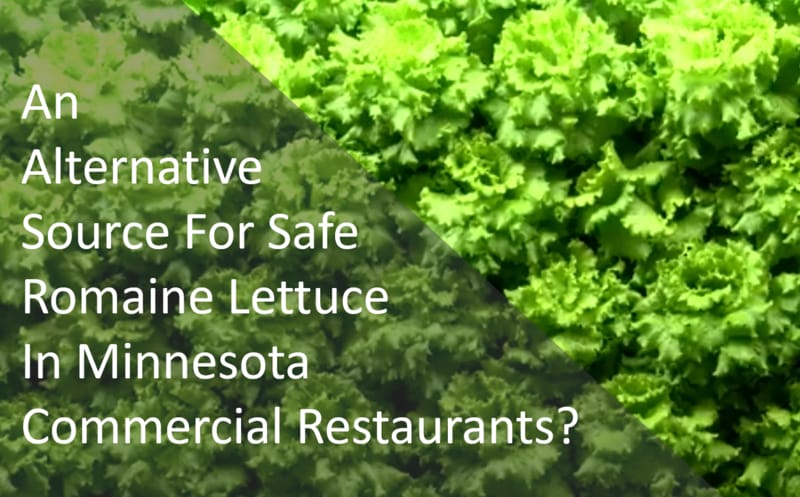With several outbreaks involving romaine lettuce over the past several years, food safety professionals are concerned with the availability and sustainability of leaving this ingredient on their menu. While studies have been inconclusive as to why the last outbreak occurred, we’ve heard some local industry professionals talk about a potential alternative to sourcing romaine from areas that have shown to be high risk. Can indoor farms be the solution the food safety industry is looking for?

How Food Safety Training in Indoor Farms Reduces Pathogen Risk
While food safety in the farming industry is a little outside of our training expertise, we’ve dealt with numerous food safety managers who have considered giving up on serving romaine due to its poor track record concerning foodborne illness. The concept of indoor farming seems to have the potential for easing those fears and greatly reducing the risk of spreading salmonella and E.coli to the general public via crispy, delicious Caesar salads and other fresh dishes involving romaine lettuce.
One of the unique things about indoor hydroponic and aeroponic lettuce farming is that there is very little chance of cross-contamination. These farms grow lettuce in a sterile environment away from livestock and potentially contaminated irrigation systems.
At the present time, however, there appear to be numerous challenges for restaurateurs and other food production facilities when it comes to sourcing lettuce grown indoors and away from potential contaminates. The hydroponic industry has plenty of potential for growth, especially when it comes to farmers looking for a low-pathogen risk way to grow product which traditionally grows in the dirt, but there are very few farmers who produce enough lettuce in this manner to make headway into the national supply chain. Hydroponic and aeroponic growers tend to be smaller and local, and may not produce as much product as large outdoor farms. During our research, however, we did find a few farms in our state that utilize this method, and the future looks promising.
Would you pay more for romaine lettuce if you knew it was grown in a MN indoor farm environment with minimal risk of pathogen contamination?
